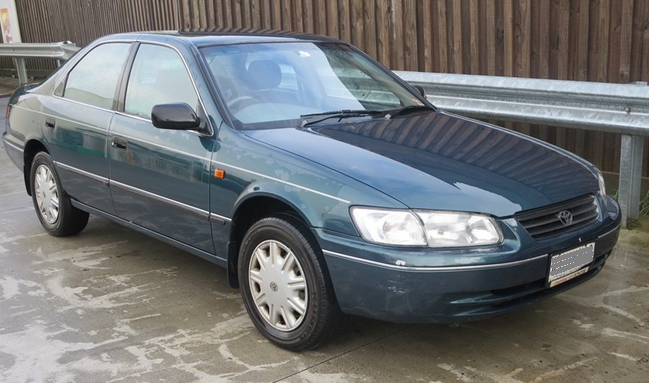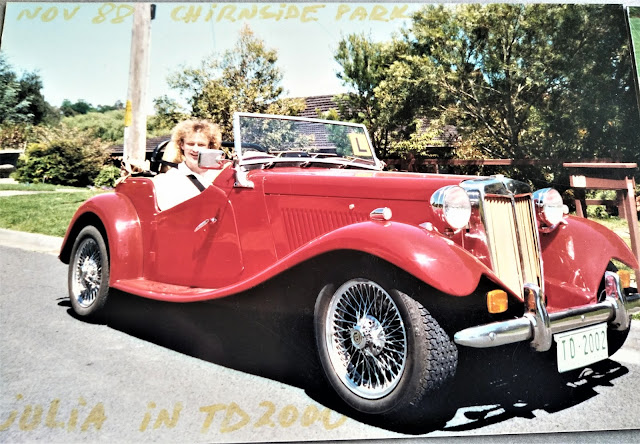I retired as 71-years old in 2007.
I announced my intention to everybody I was working for and with, and
I began to work on the text for these blogs almost immediately, without
giving any thoughts to publishing. I hurried a bit expecting an offer
of work, which never came (to my relief, but with a bit of disappointment
as well).
I was offered a permanent position
at the truck manufacturing company a few years before my retirement. The
offer I politely declined for two reasons: I would lose some 30% of
income, and also, I did not wish to become part of the corporate culture.
Being a contractor I did not mind faults left deliberately by the management in the new
vehicles, and I could tolerate the offence to my professional pride: you want
your vehicles to have faults, and you are paying me for it – who am I to
argue... Sitting in an airliner and watching the little ants deep below,
manufacturing, managing, machining, assembling – is their system, their company
culture, functioning the same as that in „my“ car companies...?
Comparing the car manufacturers from the
quality of their production and products, one of them stands out, and that is
Toyota. I worked for them four times, some 9 years all up, and could not
help admiring the emphasis the company puts on the quality of – of everything:
from quality of their administrative procedures, their methods of design,
intra-company communication, relationship with suppliers, quality of individual
components right down to the finished product. In my small field of electrical
system design I managed to achieve at Toyota something ALL other vehicle
manufacturers were vehemently refusing to accept, and that is the acceptance of
my Method of Electical System Testing.
During my second or third contract at Toyota
I noticed that the finished vehicles had an unusual number of electrical
faults as they were leaving the production line. I managed to wangle
permission to test their electrical system BEFORE the start of production
quantities.
It is true that individual electrical parts
are tested, certified and guaranteed by their manufacturers. The number of
manufacturers is fairly large, dozens, if not hundreds of them, let’s mention
some of the better known parts: lamps, instruments, radios, air conditioning systems,
engine electrics, wiring harnesses, batteries, alternators, switches, sensors,
etc., etc. All of these parts are tested and guaranteed individually, BUT NOT
connected together as they would be in the finished product. And that kind of
test I proposed to the Company, and that kind of test I was allowed
to do.
At the beginning I was helped by the
radio engineer Bill Wellfer, who needed to test his radios and various speakers,
together with their special cables, all connected together in spatial
arrangement simulating a vehicle. From the carpenters we received
a table about 2 x 5 metres, and
about 1 metre high. The table was located in the engineering „playground“ area,
that was a large room next to the engineering department, where the
engineers are able to „play“ with their parts, and which parts can be kept
there for possible future references.
The first vehicle to be thus tested had
a number of variations, and I decided to test all of them .-
a wishful thinking! The main variations involved 4- and 6-cylinder engine;
manual and automatic transmission, several different radios and speaker
arrangements; six different instrument panels; two different body styles;
several arrangements of electric door locks, power windows and alarm systems;
several air-conditioning systems... I ended up with some six hundred of
possible variations!
To make my testing as realistic as possible
I needed components that were not even made, for the production drawings
of, for example, the wiring were signed off only a few weeks before –
I was compelled to wait. With that waiting the time for testing ended up
being compressed to some 3-4 weeks, instead of the initially required 2 months
minimum. For assistance I was given two students. Bill W. also lent his
hand on occasions, and we eventually managed. In the middle of it all we had
visitors from Japan, a large group of men, quietly watching and taking
photographs, but, being busy I was unable to spare a minute of my
time for talking (none of them could speak English, and my Japanese is restricted to words they might have not liked, "kamikaze", for example).
Needless to say, that the car had no electrical
faults on the start of volume production, or at any time after, in the field.
Probably that was the basis of my winning further contracts with Toyota in the
near future, when the more refined method was very successfully employed
on the Camry – shown below - which entered volume production in 2003-2004:
Work on this vehicle started
in 2000, soon after my contract with Kenworth was so abruptly terminated. From
the onset it was done with the intention of the electrical system being fully
tested well before the start of volume production. After about two years
I received two side-kicks, two young electrical engineers new at Toyota.
Both around 30-years old, and both with some previous experience in electrical
industry: Paul T. with electrical motors, and Keith B. at Nissan in South
Africa. Both were very good engineers, and very good persons at that! They
eventually took the final phase of the project over, and I was able to
concentrate on my testing.
With this vehicle, due to
its many variations, I ended up with some 2000 possible combinations of
electrical components. Fortunately, with the delivery of first electrical
components, a young engineer, Anthony B., from wiring harness
manufacturer, arrived to assist. He downloaded my 2000 combinations into his
computer and managed to prune them down to some 1600-1700. With every
combination he prepared large sheet of paper with the list of components
required for the given test, and we were ready to start with Test Number 1.
Paul T., with a well-developed dramatic sense (his parents came from Greece) prepared
large board with chart of progress, on which we were recording daily output,
faults found, faults fixed, etc., for the benefit of our management, for which
we were praised up to Toyota’s heavens!
As it always happens, the
components we needed were not arriving according to our plans, so, instead of starting
with Test No. 1 we had to start with, say, Test No. 163, followed by Test 22.,
followed by Test 1234, but we managed, albeit with higher effort and slightly fogged
up thinking. The three months in the company of the two, sometimes up to four,
engineers and friends, remain firmly etched in my memory as the highlight of my
engineering carrier.
Needless to say, that when
the car eventually entered volume production it had no electrical faults.
I left Toyota at Christmas, 2003, but soon after I heard of several
of them, but none of them was of our doing: wiring harness manufacturer swapped
two wires in one sensitive component in such a way that it was impossible
to detect with our fairly primitive way of testing, and there was danger of the
wiring causing fire in the engine compartment. Also, there was problem with
batteries, which tended to lose charge after sitting in cars for many weeks
during shipment to Middle Eastern countries, and they had to be replaced on
arrival. Both of these problems I was aware of - and predicted in writing - on my way out of Toyota but was
unable to do anything about them.
After Toyota I worked
for a few months for a high-voltage switchboard manufacturer, also on
systems of electrical energy distribution for Schneider Electric, also for
General Motors again on a new Isuzu-GM commercial vehicle, and, finally,
for Toyota again, this time for their Service Department on the new Camry
Customer Manuals. This job I was working on from the premises of Holden
Special Vehicles company, when I was present at the meeting with the
Metropolitan Ambulance management. That shall be described in the next – LAST –
chapter.





.PNG)








